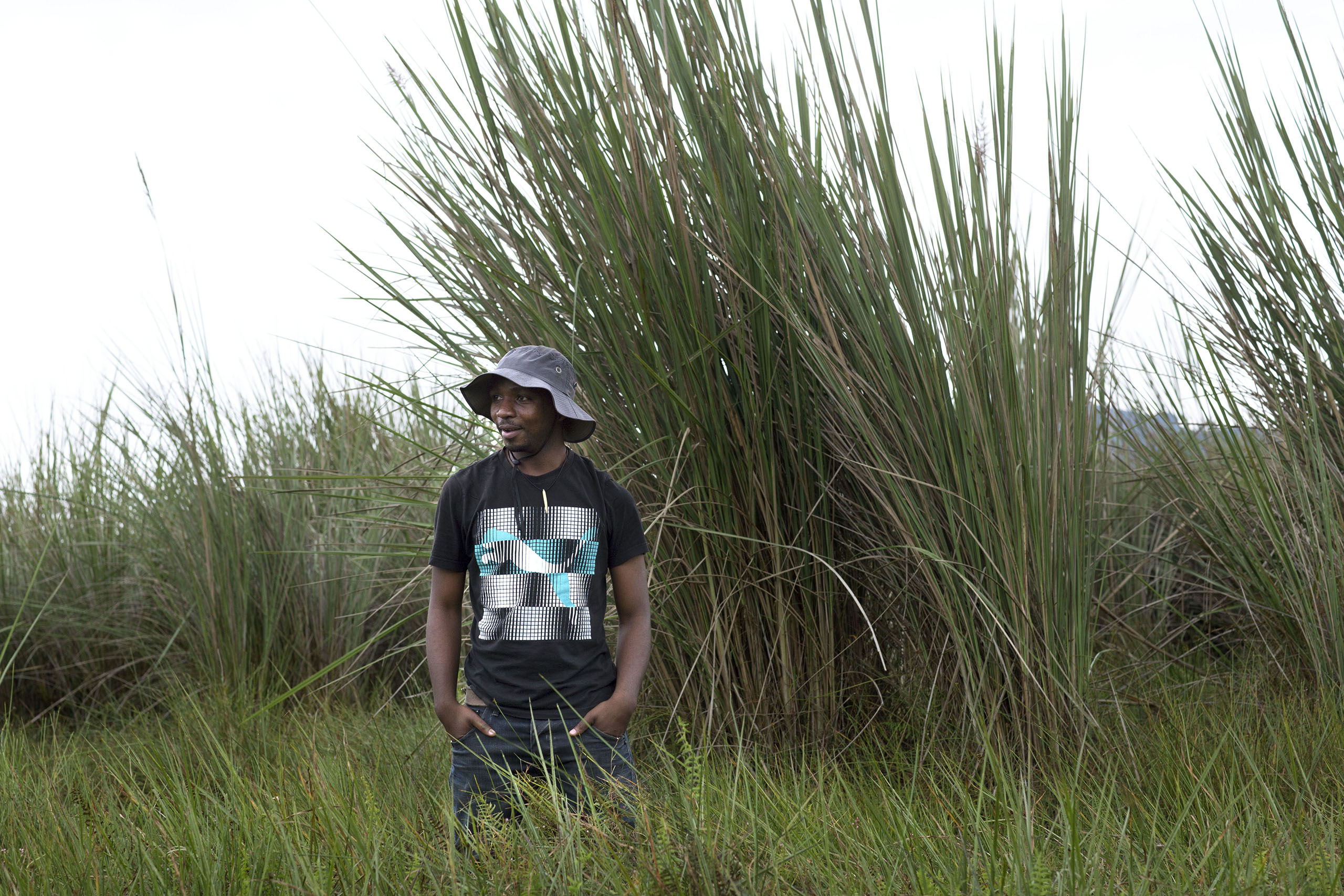Olivier Nsengimana can’t imagine what his native Rwanda would be like without the Gray Crowned Cranes he is trying to save from extinction. Not only would it mean the end of an iconic symbol of wealth and longevity in Rwandan culture, he says, it would also mark the beginning of the end of us. “Having the cranes disappear means there is something wrong, a balance that has not been maintained,” says the 32-year-old wildlife veterinarian. “Conservation is about saving humans as well. If we protect animals in their habitats, we are protecting ourselves. If we fail, we are endangering our children.”
Nsengimana fell in love with Rwanda’s only crane species as a young child assigned the afternoon task of fetching water from the river. Mesmerized by their elaborate courtship dances, he often lingered past sunset, incurring his mother’s wrath. Once plentiful, there are less than 500 cranes in the wild, according to a 2012 census. It is the bird’s very symbolism that has lead to its downfall. The cranes are poached from the wild to play the role of living lawn ornaments for the nation’s wealthy, but the delicate, meter-tall birds, with their striking plumage and tufted golden crowns, won’t breed in captivity, and many die.

Though Nsengimana trained as a livestock veterinarian, he felt the pull of Rwanda’s wild animals from early on, signing up with the Gorilla Doctors conservation team upon graduation. “It was a dream coming true, helping critically endangered species,” he says of his five years with the Rwanda-based American NGO. But he was disturbed by accounts of the cranes’ decline. “The gorillas had a foundation, and the cranes had nothing. I thought, rather than work with gorillas, who already had help, if I could use my efforts to work on the cranes, I could make a huge difference.”
And he has. Over the past two years Nsengimana has embarked on a nation-wide awareness program that uses radio and comic books to educate Rwandans about the birds, and why they should stay in the wild. He has set up a crane registry to tag those kept as pets, and worked with the government to establish an amnesty program to return any illegally kept birds to his newly founded rehabilitation center in Rwanda’s Akagera National Park. Once the amnesty is over, anyone caught with an unregistered bird will be fined $7000. So far, Nsengimana has been able to return 98 birds to the wild. Several have already borne chicks.
In the two-and-a-half decades since Nsengimana got lectured for lingering too long with the cranes, Rwanda’s rapid growth has resulted in far fewer wetlands. At the same time, there are more national parks. Nsengimana is making sure that they are full of the birds that symbolize Rwanda’s natural wealth as well as its environmental longevity.
- The 100 Most Influential People of 2024
- The Revolution of Yulia Navalnaya
- 6 Compliments That Land Every Time
- What's the Deal With the Bitcoin Halving?
- If You're Dating Right Now, You're Brave: Column
- The AI That Could Heal a Divided Internet
- Fallout Is a Brilliant Model for the Future of Video Game Adaptations
- Want Weekly Recs on What to Watch, Read, and More? Sign Up for Worth Your Time